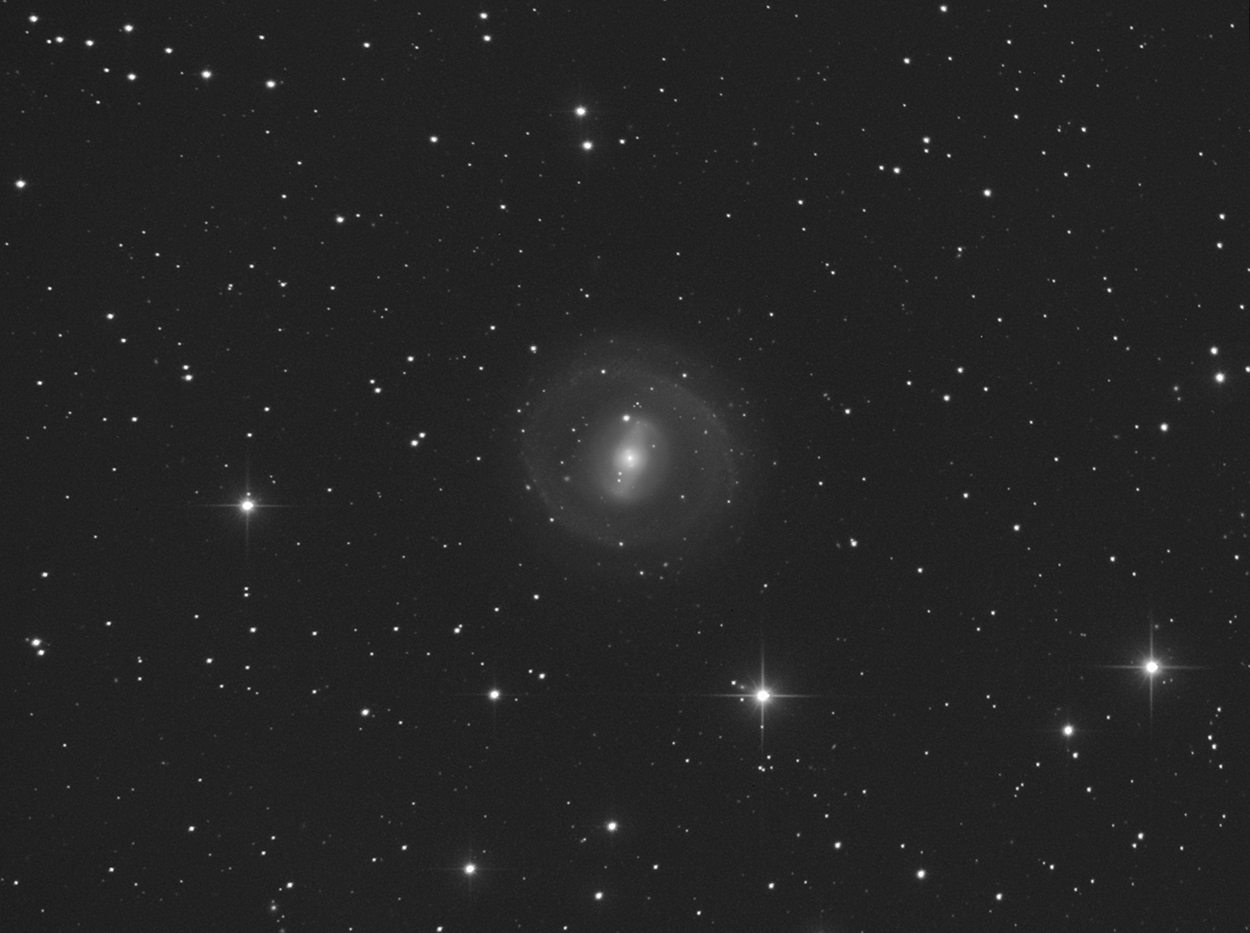
| HOME |
NGC 1291 AKA NGC 1269
RING GALAXY - ERIDANUS
(Image centered at ra 03:17:03 / dec -41:08)
CLICK THE IMAGE FOR A LARGE VIEW
September 2012 - Camping La Porteņa, San Antonio de Areco, Buenos Aires, Argentina
DATA
TYPE: Spiral Galaxy
APPARENT MAGNITUDE: 9,39
APPARENT DIAMETER: 5,50 x 4,2 arc minutes
DISTANCE: 33 Millions light years
IMAGE INFORMATION
SCOPE: ORION OPTICS UK 6" f5 Newtonian w/Televue Paracorr working at f5,75
CAMERA: QSI 583 WS
MOUNT: SKY WATCHER NEQ6
FILTERS: Baader L Set
SKY CONDITIONS: Rural Skies.
EXPOSURES: L (120)
OBJECT DESCRIPTION AND IMAGE SESSION
NGC 1291 is a bright Galaxy but very difficult to process. Although the inner structure is very bright, the outer rings are quite dim. The galaxy was discovered by Scottish astronomer James Dunlop in 1826 while working from South Wales Australia. The object was entered in the New General Catalogue as NGC 1291 by Danish astronomer Johan Ludvig Emil Dreyer. English mathematician and astronomer John Herschel observed the same object in 1836 and enter it as NGC 1269 without realizing it was already catalogued.
NGC 1291 faces towards our as a nearly face on. It has a prominent core and is actually forming stars in the disk, albeit being slowly a lenticular galaxy. Like other early-type galaxies, NGC 1291 has a population of old globular clusters.
This is an old image taken in 2012. The data was recovered from a hard drive. I was unable to process the RGB data. May be some time in the near future...